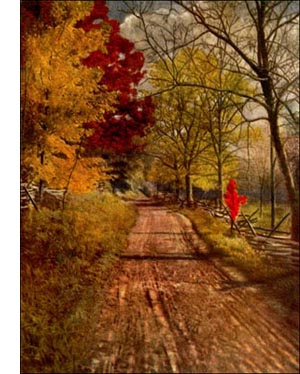Cuban Pine or Swamp Pine Tree
 Cuban Pine, Swamp Pine (P. Caribaea, Morelet.)-Tree, 100 to 120 feet, with tapering trunk and dense, round crown, above large horizontal limbs. Bark in broad, scaly, irregular plates, reddish brown, showing orange in the shallow fissures. Wood heavy, very hard, strong, tough, durable, coarse, dark orange, with thick, nearly white sap wood. Buds, elongated, scaly, 3/4 to 1 1/2 inches long, light brown; lateral buds smaller. Leaves in clusters of twos and threes; stout, dark green, 8 to 12 inches long, persistent 2 years; sheaths thin, brown. Flowers in January, before new leaves, subterminal; staminate clustered, incurving, purplish, 1 to 1 1/2 inches long; pistillate oval, 2 to 3 in cluster, pinkish, 1/2 inch long. Fruits elongated, 3 to inches long, narrowing to blunt apex, pendant, with beaked, thickened scales and winged seeds. Preferred habitat, damp, sandy soil of swamp borders, with even moisture supply. Distribution, coast region, South Carolina to Florida and Louisiana. Also Bahamas, Cuba and other islands, and Central America.
Cuban Pine, Swamp Pine (P. Caribaea, Morelet.)-Tree, 100 to 120 feet, with tapering trunk and dense, round crown, above large horizontal limbs. Bark in broad, scaly, irregular plates, reddish brown, showing orange in the shallow fissures. Wood heavy, very hard, strong, tough, durable, coarse, dark orange, with thick, nearly white sap wood. Buds, elongated, scaly, 3/4 to 1 1/2 inches long, light brown; lateral buds smaller. Leaves in clusters of twos and threes; stout, dark green, 8 to 12 inches long, persistent 2 years; sheaths thin, brown. Flowers in January, before new leaves, subterminal; staminate clustered, incurving, purplish, 1 to 1 1/2 inches long; pistillate oval, 2 to 3 in cluster, pinkish, 1/2 inch long. Fruits elongated, 3 to inches long, narrowing to blunt apex, pendant, with beaked, thickened scales and winged seeds. Preferred habitat, damp, sandy soil of swamp borders, with even moisture supply. Distribution, coast region, South Carolina to Florida and Louisiana. Also Bahamas, Cuba and other islands, and Central America.No more beautiful pine grows in the Southern States than this stately tree that skirts the swampy coast land, forming great forests and casting a goodly shadow under its thick, dark, lustrous foliage mass. Beside it the other pines seem to have very ragged and loose crowns. Here in the humid air that flows from sea or gulf, the Cuban pine promises to replenish our depleted forest areas even as the shortleaf does back from the coast. The same vigour characterises thousands which endure the shade and soon spring to a height that resists the fires that menace them.
The wood of the Cuban pine is not distinguished in the markets from longleaf pine, and it serves the same uses. Spars of the largest dimensions, straight and free from blemish, come out of these coast pineries. The wide, porous sap wood and the coarse (,rain once counted against this tree, but they are now considered distinct advantages, for this kind of wood more readily absorbs creosote and other preservatives by infiltration, and kilndrying converts the sap wood into good lumber.
Turpentine of higher quality than that of longleaf pine is derived from these trees, which also abound in other resinous matters. Young trees are ready for tapping at forty years; and in this time a new forest has replaced the one stripped by lumbermen. A large part of the turpentine exported by Georgia and South Carolina to-day is from land thus spontaneously reforested. The future of our naval stores depends to a large extent on the perpetuity of the forests of Cuban Pine.